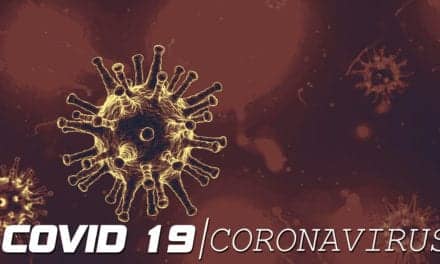PORTLAND, Ore – Vesticon Corp has announced that the Food and Drug Administration (FDA) has cleared the company’s new Epley Omniax device to proceed to market in the United States. This is reportedly the first-ever approval for national use of a device designed to assist in the diagnosis and treatment of balance disorders and vertigo, including benign paroxysmal positional vertigo (BPPV).
An estimated 15 million Americans alone currently suffer from balance problems and vertigo, which often is debilitating to those it afflicts.
A recent Portland “start up,” Vesticon Corp developed the Omniax, and is in talks with several multinational medical device companies about distribution. “We believe that the FDA action for the Omniax is significant to achievement of our mission of helping physicians and their patients achieve victory over vertigo,” said President and CEO Cathryn Epley.
The Omniax is the first in the vestibular field to receive clearance to assist doctors with treatment of this infliction. It is also one of the few devices cleared to assist doctors in diagnosis. Existing technologies typically only provide a general assessment or evaluation and none are cleared for treatment applications.
The Omniax includes a software-guided patient positioning system using infrared goggles that assist physicians in analyzing abnormal patterns of eye movement. These are involuntary responses to loose particles floating in the semi-circular canals of the ear. At the same time, the Omniax also helps to “reposition” those particles out of canals by rotating patients to varying positions.
The Omniax product has been highly anticipated by the medical community and Epley says it has a backlog of customers eager to access the Omniax. Vesticon hopes to begin shipping to its national customer base this Fall.
SOURCE: Vesticon Corp
About Vesticon
Vesticon’s mission is "Victory Over Vertigo." The company, which is headquartered in Portland, Ore, develops first-of-its-kind medical technologies for doctors who treat vestibular disorders. Products are based on the new understanding that vestibular disorders can be conclusively diagnosed and treated. Until recently, it was thought that there wasn’t much that could be done for patients suffering from these disorders. All the products are noninvasive and targeted at the office setting. The company has been awarded $4.8 million from the National Institutes of Health (NIH) Small Business Innovation and Research program (SBIR) to develop the Omniax and two other technologies. Vesticon was the largest recipient of NIH SBIR grants in 2006 and 2007 in the state of Oregon. The Company is currently seeking funding from qualified individual investors and seed funds in order to market its products.
About Vestibular disorders and BPPV
Benign Paroxysmal Positional Vertigo (BPPV) is the most common disorder of the vestibular system, which is located in the inner ear. It is caused by loose particles in one of the inner ears’ six semi-circular canals. Symptoms include a sudden onset of disequilibrium with disorientation, dizziness, nausea and vomiting. Frequency and severity of episodes vary between individuals. BPPV can be caused by trauma to the body or head, a virus, or by unknown causes and is frequently misdiagnosed or left untreated.
Vestibular disorders currently impact at least fifteen million people in the U.S in any year. They are the third most frequent complaint in primary care and emergency rooms and the number one complaint in the growing elderly population. They are also the second most common reason for Medicare hospital admissions with an average of 4.3 days per stay. They contribute to falls in the elderly, which have direct costs in the billions. Chronic or unresolved problems reduce quality of life or can lead to significant disability. However, while there is great patient demand, vestibular disorders are extremely frustrating and complex to manage in a clinical practice. The average patient with a vestibular problem sees an average of four to six medical providers before the correct diagnosis is made. And even then, treatment is often palliative in nature.




